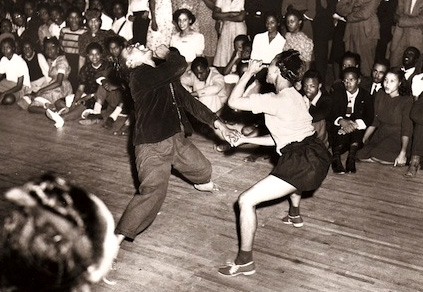The development of the Lindy hop must be understood within the context of Depression-era black culture and the Savoy Ballroom in New York City.
For some young black dancers the Savoy became a way of life, and for serious Lindy hoppers the crucial part of the evening was showtime, when the best dancers took the floor and tried to eliminate each other. The improvisational section—known as the breakaway, when couples broke into solos—spawned many new steps and maneuvers that were subsequently incorporated into the dance.
This according to “Swinging at the Savoy” by Barbara Engelbrecht (Dance research journal XV/2 [spring 1983] pp. 3–10). Above, a moment at the Savoy Ballroom in the 1930s; below, a tribute to the great Frankie Manning includes vintage footage from the Savoy.




